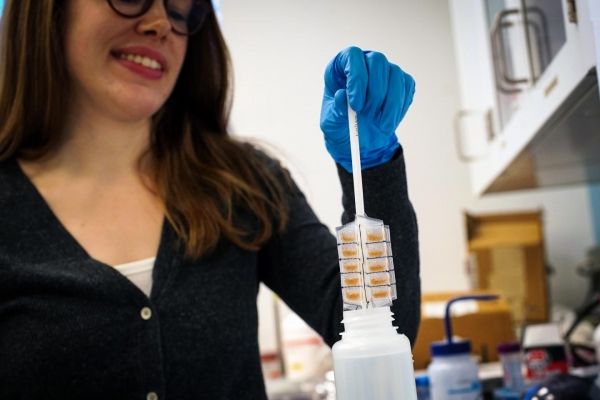Lead, arsenic, and other heavy metals are increasingly present in water systems around the world due to human activities, such as pesticide use and, more recently, the inadequate disposal of electronic waste. Chronic exposure to even trace levels of these contaminants, at concentrations of parts per billion, can cause debilitating health conditions in pregnant women, children, and other vulnerable populations.
Monitoring water for heavy metals is a formidable task, however, particularly for resource-constrained regions where workers must collect many liters of water and chemically preserve samples before transporting them to distant laboratories for analysis.
To simplify the monitoring process, MIT researchers have developed an approach called SEPSTAT, for solid-phase extraction, preservation, storage, transportation, and analysis of trace contaminants. The method is based on a small, user-friendly device the team developed, which absorbs trace contaminants in water and preserves them in a dry state so the samples can be easily dropped in the mail and shipped to a laboratory for further analysis.
The device resembles a small, flexible propeller, or whisk, which fits inside a typical sampling bottle. When twirled inside the bottle for several minutes, the instrument can absorb most of the trace contaminants in the water sample. A user can either air-dry the device or blot it with a piece of paper, then flatten it and mail it in an envelope to a laboratory, where scientists can dip it in a solution of acid to remove the contaminants and collect them for further analysis in the lab.
Read more at Massachusetts Institute of Technology
Image: MIT graduate student Emily Hanhauser demonstrates a new device that may simplify the logistics of water monitoring for trace metal contaminants, particularly in resource-constrained regions. (Credit: Melanie Gonick/MIT)


